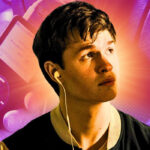Have you ever felt the urge to just let loose and dance, maybe even all night? That feeling of freedom and expression isn’t just about having fun; it’s deeply connected to how we express ourselves in all aspects of our lives, even singing. At the recent Classical Singer Convention in Chicago, Dr. Diane Reich demonstrated this powerful connection in a masterclass that had everyone rethinking vocal training – and maybe even wishing they had danced all night.
Traditionally, classical singing masterclasses focus on technique, breath control, and musicality. But Dr. Reich’s approach was refreshingly unconventional. As Darin Adams of Bridgelight Arts, voice teacher to convention participant Vincent Grosso, recounts, this wasn’t your typical formal session. Imagine a masterclass where the instructor kicks off her shoes for an impromptu basketball game with a student mid-aria, or leads a room full of opera singers in a freestyle dance-off to Mozart. Sounds unexpected? Absolutely. But the results were undeniable.
Vincent, a 17-year-old bass-baritone, initially felt skeptical about incorporating dance into vocal training. Like many, he associated classical singing with stillness and precise posture. However, Dr. Reich quickly identified that Vincent’s performance of Schubert’s “Ständchen” was technically proficient but lacked a certain freedom. His voice was becoming constricted, particularly in the higher register. To address this, Dr. Reich didn’t just offer verbal cues; she got him moving. Engaging Vincent in an imaginary basketball scrimmage while singing, dribbling, shooting, and even boxing him out, might seem bizarre, but it was transformative.
During their “air basketball” session, as Vincent sang the line reaching for a high F, Dr. Reich made him shoot a three-pointer. The result? “The voice floated over the top with unexpected strength and freedom,” Adams observed. This wasn’t just a fluke. By physically engaging with movement, Vincent unlocked a new dimension in his voice. He was able to access a sense of muscle memory, similar to how downhill skiers visualize runs to improve their physical performance. When Vincent returned to singing the song standing still, visualizing the basketball game, he maintained that newfound vocal freedom and vitality.
This technique wasn’t a one-size-fits-all approach. For Elisabeth Yates, a soprano singing Argento’s “Spring,” the issue wasn’t constriction but grounding. While her performance was beautiful, it lacked connection to her core. Dr. Reich prescribed a different kind of movement – Tai Chi. By having Elisabeth perform Tai Chi while singing and providing gentle physical resistance, Dr. Reich helped her find stability and depth. Suddenly, even the rapid passages of the song gained a richer tone and grounded presence. It was as if the controlled, flowing movements of Tai Chi anchored her voice, providing a solid foundation for her sound.
The masterclass continued to showcase Dr. Reich’s intuitive understanding of movement and voice. Melanie Ross, singing Mozart’s “Una donna a quindici anni,” benefited from a lively dance party. Freestyle dancing around the room, including Dr. Reich demonstrating moves like “the twist” and even the iconic “Pulp Fiction” dance, helped Melanie loosen up her physical gestures. This newfound physical freedom translated directly into a more vibrant and energetic vocal performance.
Gabrielle Johnson, tackling the emotionally weighty “Solvejg’s Song,” was instructed to perform quad exercises in a pyramid stance while singing. This might seem counterintuitive for a delicate melody, but it brought surprising maturity and depth to her voice. What had sounded thin before, now resonated with a richer, more even vibrato, perfectly suited to the song’s style. Even for Elise Trejo, who beautifully conveyed emotion through facial expressions while singing Handel’s “As When the Dove,” movement proved crucial. Dr. Reich noticed Elise’s arm gestures and stances were static, leading to stagnant breath support and air creeping into her tone. By incorporating dance, Elise dynamically expelled excess breath, resulting in a cleaner, more supported sound.
The resounding success of Dr. Reich’s masterclass highlights a crucial point: movement and dance are not just about physical activity; they are fundamental to unlocking expression, even in disciplines that appear to be primarily about stillness and control, like classical singing. The students, initially hesitant, were not only grateful but also energized by Dr. Reich’s willingness to step outside conventional methods. She shot hoops, danced, and even performed martial arts moves – all to help them sing stronger, healthier, and more expressively.
Perhaps we should all take a cue from Dr. Reich’s unconventional approach. Whether you’re a singer, a public speaker, or simply someone looking to express yourself more fully, incorporating movement and dance might be the key. Maybe, just maybe, embracing the feeling of wanting to dance all night – even if you don’t literally dance all night – can unlock a hidden potential within you. And who knows? You might just surprise yourself with the strength, freedom, and expressiveness you discover. Perhaps, like those classical singers, you’ll realize that sometimes, the best way to find your voice is to move your body and let loose, as if you should have danced all night.


